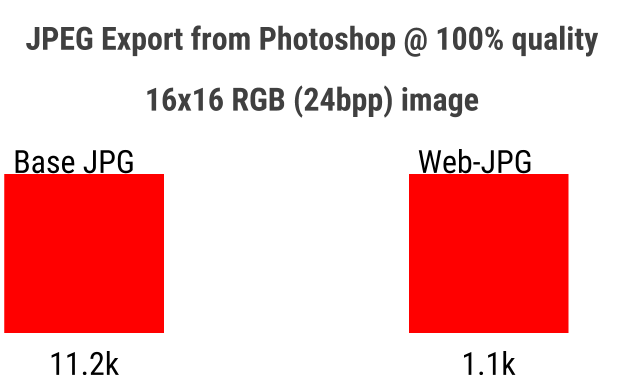

I'm going to select my original, uncompressed photo, and I'm going to duplicate its Background layer in the Layers palette by pressing Ctrl+J (Win) / Command+J (Mac). I said a moment ago that the Difference blend mode looks for differences between two layers, and that any areas between the two layers that are exactly the same appear as pure black. At least, not without using Photoshop's Difference blend mode to help us out. If we were to print them, the differences would become clear, but on a computer screen, which has a much lower resolution than a printed image would have, the differences are not so easy to spot.

I realize it's a little difficult to tell in the screenshot above, but if you were to look at both of these images on my screen in Photoshop, you'd have trouble telling which one is compressed and which one isn't. This means that the image on the left has been compressed. The one on the left is a copy of the photo saved in Photoshop at 60% image quality, which is a fairly typical setting. The one on the right is the original, uncompressed photo, as if it was downloaded directly from a digital camera.
HOW TO REDUCE A FILE SIZE OF A JPEG WINDOWS
Two document windows open in Photoshop, each displaying a copy of the same photo.īut are they really the same image? Appearances can be deceiving, especially on a computer screen. Here, I have two document windows open in Photoshop, each one containing what appears to be the same image: It does help, though, for us to see and understand what's happening to our images, especially for those of us who, up until now, have been convinced there's no difference in image quality between a compressed and uncompressed digital photo. In a perfect world, sure, but that's just not realistic. Now, this isn't to say that we all need to stop compressing our photos. The Difference blend mode isn't used very often outside of the special effects world, but it does a great job of showing us how much garbage (yes, I said garbage) we're adding to our jpeg images when we compress them. Any areas in both layers that are exactly the same appear as pure black, while areas that are different in some way appear as strange colors. The Difference blend mode gets its name from the fact that it looks for differences between two layers. To see exactly what's happening to our images, we'll use Photoshop's Difference layer blend mode. But thanks to Photoshop and one of its rarely-used blending modes, the horrors of jpeg compression become strikingly clear.ĭownload this tutorial as a print-ready PDF! Unfortunately, it also reduces image quality, although it's not always easy to see what sort of negative impact the compression is having on the image, especially when viewing it on a computer monitor. Since the jpeg file format is still the format of choice for digital photos, even though it's been around for more than 15 years, compressing images usually means using jpeg compression, which does a great job of reducing the file size. Sometimes, we need to compress them to make our file sizes smaller, especially if we're emailing them to a client or to family members, or posting them on a website. It's a fact of life when it comes to working with digital photos and images.


 0 kommentar(er)
0 kommentar(er)
